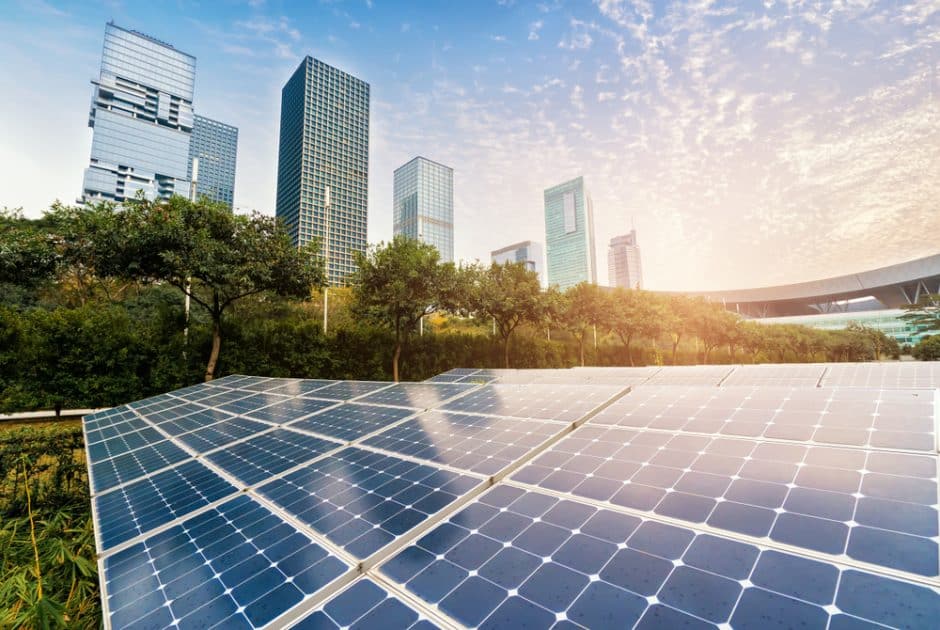As the energy crisis looms large, cities can lead on decarbonisation and energy efficiency

As the latest World Energy Outlook report by the International Energy Agency exemplifies, we live in a context of complex, global-scale challenges, where successive crises lead us to live in a state of continuous change. In this context, we need to respond to the climate crisis through an integrated approach that takes into account the interconnections with other crises, such as energy, biodiversity loss, and resource availability. An integrated, holistic approach can help unlock a transition that is unprecedented in terms of scale and speed. The evidence is clear that a simple acceleration of what we are doing now cannot avert the most catastrophic impacts of climate change. We must think and act differently.
Climate KIC is a global leader in climate action. Acknowledging the need for new approaches to unlock unprecedented change, in 2019, we adopted a mission approach to achieve 100 climate-neutral and smart cities by 2030, illustrating how all cities can follow suit in a timely way. Such an approach aims to deliver impact by rethinking the role of research and innovation in addressing some of our greatest challenges and embracing new forms of governance and collaboration in order to unlock solutions that could not be achieved through individual actions.
Climate KIC and its partners have invested talent and resources to test ideas about how to enable such a ‘mission’ approach. With a bold EIT investment in Deep Demonstrations, several cities experimented with more radical ways of working in support of 2030 climate neutrality. These cities and leading innovators with critical capabilities have strongly influenced the design of both the EU Mission Climate-Neutral and Smart Cities and NetZeroCities, a collaborative partnership of more than 30 organisations that will help European cities achieve the Mission.
Cities are the centres of economic activity, knowledge generation, innovation, and new technologies, and influence the quality of life of citizens who live or work in them, contributing substantially to the wellbeing of European communities. Cities take up only 4 per cent of the EU’s land area yet are home to 75 per cent of EU citizens. Furthermore, cities consume over 65 per cent of the world’s energy and account for more than 70 per cent of global CO2 emissions. Three out of four EU citizens were living in urban areas in 2014 and this number is expected to rise to approximately 83.7 per cent by 2050.
Urban action thus plays a pivotal role in achieving the European Green Deal (EGD) target of reducing emissions by 55 per cent by 2030 and of climate neutrality by 2050. This level of ambition is an extraordinary undertaking and will require profound and systemic changes. Government leadership will be critical, as will actions by industry, education and research institutions, and civic organisations, requiring alignment in terms of policies, governance, and how we arrange for the needed capital investments.
In areas such as urban mobility and energy efficiency of buildings, the characteristics of cities—such as high levels of population density and geographic focus—lend themselves to innovation opportunities that can have a large impact on climate neutrality. The way to climate neutrality in cities can bring massive (and measurable) ‘co-benefits’ such as better outdoor and indoor air quality, less road congestion and noise, fewer road deaths, healthier active mobility, more comfortable buildings, and a cleaner, more beautiful, and more valuable urban environment. In other words, there is a strong and positive ‘spill-over’ effect from policy measures to reduce greenhouse gases (GHG) in cities which will help them build support for such measures amongst citizens.
Globally, buildings are responsible for around 40 per cent of all raw materials demand, account for 39 per cent of global energy-related emissions, and for 35 per cent of total waste generation (in the EU). At the same time, many local and national governments have committed significant public funding to building, infrastructure and construction as a recovery strategy from the COVID-19 crisis. Meeting the intensifying demand for buildings and infrastructure, while creating quality jobs, driving economic recovery, and achieving our climate targets, will inevitably require moving away from business-as-usual practices towards low carbon, circular construction.
While most of the GHG emissions from buildings today are due to operational energy use, as energy efficiency increases and energy sources become cleaner, the relative importance of embodied carbon will continue to rise. In Europe, embodied carbon already accounts for half of the whole life cycle (WLC) carbon emissions of new buildings. In countries with relatively clean energy systems, such as Sweden, embodied carbon might already exceed operational emissions.
Over the past two years, Climate KIC has explored how to position cities as market shapers for low-carbon and circular buildings, working alongside two large redevelopments in Milan and Madrid as testbeds. Healthy, Clean Cities – European Cities for Carbon Neutral Construction (HCC EU CINCO), funded by Laudes Foundation sees the collaboration of 13 interdisciplinary and cross-sectoral partners, who have developed and implemented a portfolio of aligned, multi-lever actions towards this purpose. Perception of Timber at MIND, funded by the Built by Nature Accelerator Fund, aims to create the first Timber Living Lab in Italy, linking a network of key stakeholders across the whole construction value chain (from demand owners to designers and suppliers, as well as citizens) to dismantle misconceptions preventing the adoption of engineered timber in construction.
